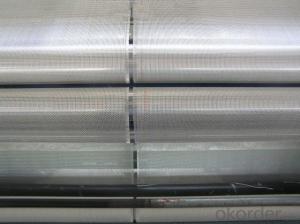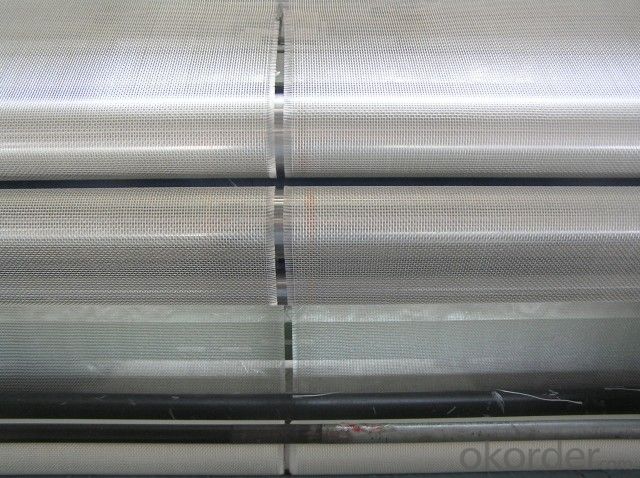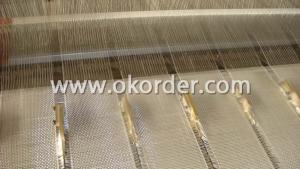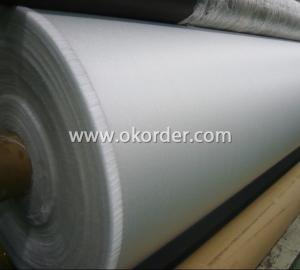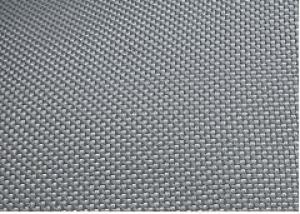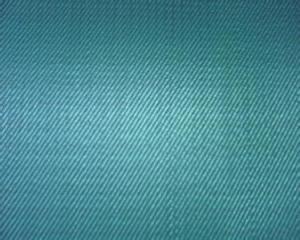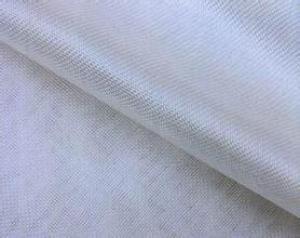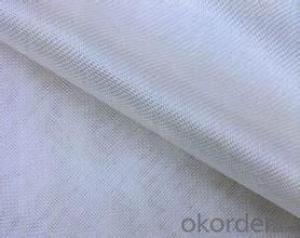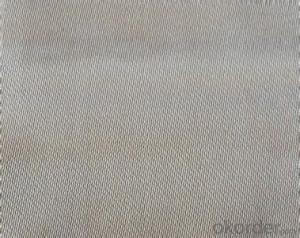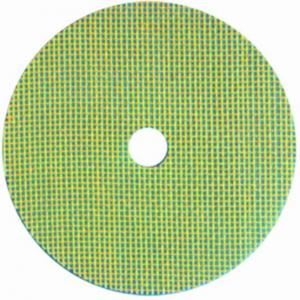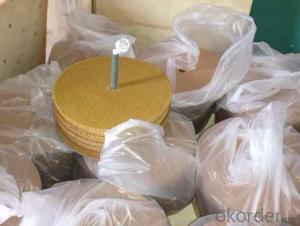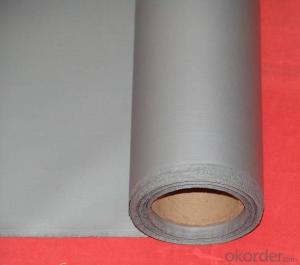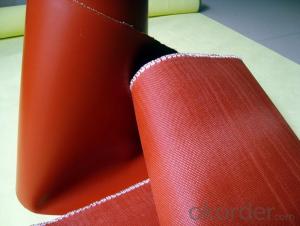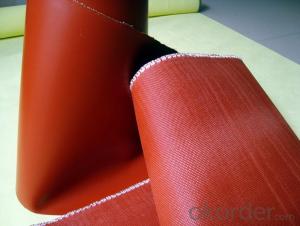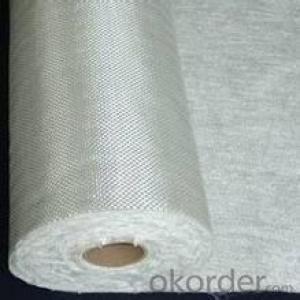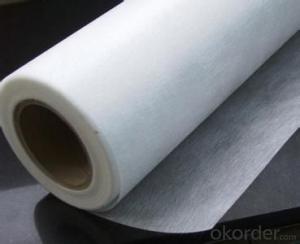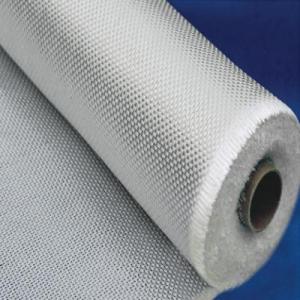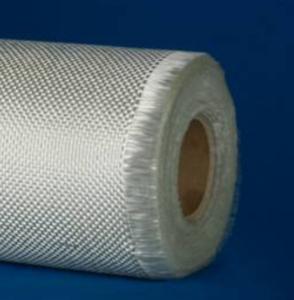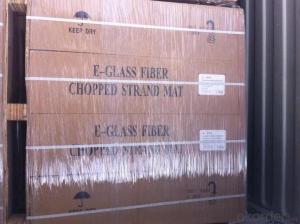Fiberglass Silicone Fabric for Grinding Wheel
- Loading Port:
- Shanghai
- Payment Terms:
- TT OR LC
- Min Order Qty:
- 10 m.t.
- Supply Capability:
- 100 m.t./month
OKorder Service Pledge
OKorder Financial Service
You Might Also Like
FIBERGLASS YARN is made from different glass fiber filaments, which are then gathered and twisted into one individual yarn. Characteristics :consistent linear density, Application: Mainly used for weaving various reinforce, insulation, anticorrosion, heat insulation fabric and sleeves etc. We can supply different shapes and roll weight, such as milk bobbin, 3.5kg big and 1.0g /0/5kg small paper bobbin |
style | Weave pattern | Yarn description | Count(in) | Weight (g/m2) | Thickness (mm) | |
warp | fill | |||||
116 | plain | ECD450 1/2 | ECD450 1/2 | 60 x 60 | 108 | 0.095 |
2116 | plain | ECE225 1/0 | ECE225 1/0 | 60 x 58 | 105 | 0.09 |
2165 | plain | ECE225 1/0 | ECG150 1/0 | 60 x 52 | 123 | 0.10 |
7628 | plain | ECG75 1/0 | ECG75 1/0 | 44 x 31 | 200 | 0.18 |
3732 | twill | ECG37 1/0 | ECG37 1/0 | 48 x 32 | 430 | 0.43 |
3784 | satin | ECG37 1/2 | ECG37 1/2 | 44 x 35 | 870 | 0.80 |
| Remark: The above data are only the representative products, there are different threads, such as 1/3,2/2,2/3,1/5……etc. Also have C-Glass yarn. |
- Q: Can fiberglass fabric be used for curtains and drapes?
- Yes, fiberglass fabric can be used for curtains and drapes. Fiberglass fabric is a versatile material that offers several benefits for curtains and drapes. Firstly, fiberglass fabric is known for its durability and strength, making it a long-lasting choice for curtains and drapes. It can withstand regular use and is resistant to wear and tear, ensuring that your curtains and drapes will remain in good condition for a long time. Additionally, fiberglass fabric is often treated with a special coating that makes it flame-resistant. This is a crucial feature for curtains and drapes, especially in areas where fire safety is a concern. The flame-resistant properties of fiberglass fabric provide an added layer of protection and peace of mind. Moreover, fiberglass fabric is also known for its insulation properties. It can help to regulate temperature and block out unwanted drafts, making it an excellent choice for curtains and drapes in both cold and hot climates. The insulation properties of fiberglass fabric can contribute to energy efficiency in your home, helping to reduce heating and cooling costs. Furthermore, fiberglass fabric is lightweight and easy to maintain. It is typically stain-resistant, making it easier to clean and maintain the appearance of your curtains and drapes. Fiberglass fabric also tends to resist fading from sunlight exposure, ensuring that your curtains and drapes will maintain their color and vibrancy over time. In summary, fiberglass fabric can definitely be used for curtains and drapes. Its durability, flame-resistant properties, insulation capabilities, and ease of maintenance make it a practical and versatile choice for window treatments.
- Q: How does fiberglass fabric handle UV degradation?
- Fiberglass fabric is highly resistant to UV degradation. It is designed to withstand prolonged exposure to sunlight without deteriorating or breaking down. The unique composition of fiberglass, with its woven strands of glass fibers, provides excellent protection against the damaging effects of UV radiation. This makes fiberglass fabric a durable and long-lasting material for various applications, including outdoor use.
- Q: Can fiberglass fabric be used for filtration in water treatment plants?
- Filtration in water treatment plants can indeed benefit from the utilization of fiberglass fabric. Renowned for its exceptional durability, high strength, and chemical resistance, fiberglass fabric proves to be an apt choice for filtration purposes. Its efficacy in extracting suspended solids, sediment, and other particles from water guarantees a supply of cleaner and safer water. Furthermore, due to its ability to endure elevated temperatures and pressures, fiberglass fabric is well-suited for the diverse filtration techniques employed in water treatment plants.
- Q: Are fiberglass fabrics suitable for use in medical or healthcare settings?
- Yes, fiberglass fabrics are suitable for use in medical or healthcare settings. Fiberglass fabrics offer a range of properties that make them ideal for use in these settings. Firstly, fiberglass fabrics are known for their high strength and durability. This makes them suitable for applications such as medical gowns, drapes, and curtains, where they need to withstand frequent handling and washing. The strong and tear-resistant nature of fiberglass fabrics ensures they can withstand the rigors of daily use in healthcare facilities. Additionally, fiberglass fabrics have excellent resistance to chemicals and are often used in medical environments where exposure to various substances is common. They have a high resistance to many solvents, acids, and bases, making them ideal for applications such as protective aprons, gloves, or masks that provide a barrier against hazardous substances. Furthermore, fiberglass fabrics have good thermal insulation properties. This is particularly beneficial in medical settings where temperature regulation is crucial, such as in incubators or thermal blankets. The thermal insulation properties of fiberglass fabrics help maintain a stable temperature, ensuring patient comfort and safety. Moreover, fiberglass fabrics can be manufactured with antimicrobial properties. This is essential in healthcare settings to prevent the growth and spread of bacteria and other microorganisms. Antimicrobial fiberglass fabrics can be used in items such as bedding, curtains, or privacy screens to reduce the risk of infection transmission. Lastly, fiberglass fabrics are lightweight and breathable, allowing for good air circulation and moisture management. This is important in medical or healthcare settings to prevent the build-up of moisture, which can lead to the growth of bacteria or fungi. The breathability of fiberglass fabrics also ensures patient comfort and reduces the risk of skin irritations. In conclusion, fiberglass fabrics offer a range of properties that make them suitable for use in medical or healthcare settings. Their strength, chemical resistance, thermal insulation, antimicrobial properties, and breathability make them ideal for various applications in these environments, ensuring the safety, comfort, and well-being of patients and healthcare professionals.
- Q: How does fiberglass fabric perform in moisture resistance?
- Fiberglass fabric demonstrates a strong performance in terms of moisture resistance. It possesses a natural water-resistant quality and does not readily absorb moisture. This attribute renders it suitable for various applications that involve frequent exposure to moisture, including boat and yacht construction, outdoor furniture, and even the automotive industry. Furthermore, fiberglass fabric remains structurally sound and performs well even in high humidity conditions. Nevertheless, it is vital to acknowledge that while it resists moisture, it is not completely waterproof. Prolonged exposure to water or submersion may eventually result in some water absorption. Therefore, it is always advisable to refer to the specific product specifications and manufacturer guidelines to ascertain the level of moisture resistance offered by a particular fiberglass fabric.
- Q: What color steel plate is good for dust-free workshop?
- Polyurethane sandwich panel consists of upper and lower intermediate color steel polyurethane foam composition, is one of the widely used building materials in the construction industry, has good thermal insulation, sound insulation, fire prevention materials added non combustion polyurethane. The polyurethane sandwich board has the advantages of non burning, moisture resistance, moth resistance, sound insulation, light weight, dry and wet, no deformation and heat preservation effect, and can be nailed, sawed and constructed, which is simple and convenient, and can be used repeatedly.
- Q: Can fiberglass fabric be used for making window screens?
- Yes, fiberglass fabric can be used for making window screens. It is a popular choice due to its durability, resistance to corrosion and insects, and its ability to provide good visibility and airflow while keeping bugs out.
- Q: What is the cost range for fiberglass fabrics?
- The cost range for fiberglass fabrics can vary depending on various factors such as the quality, weight, and width of the fabric, as well as the supplier and any additional features or treatments applied to the fabric. On average, fiberglass fabrics can range from around $5 to $20 per yard. However, higher-end or specialty fiberglass fabrics with specific properties or finishes can be priced higher, with some reaching up to $50 or more per yard. It is important to note that these prices are approximate and may vary based on market conditions and individual suppliers. Additionally, bulk orders or wholesale purchases may offer discounts, so it is recommended to contact suppliers directly for accurate pricing information.
- Q: How does fiberglass fabric perform in creep resistance?
- Fiberglass fabric generally exhibits good creep resistance properties. Creep refers to the tendency of a material to deform slowly under a constant load or stress over time. Fiberglass fabric, due to its inherent structural composition and unique manufacturing process, possesses a high resistance to creep deformation. The use of glass fibers in the fabric provides excellent strength and stiffness, allowing it to withstand significant loads without experiencing permanent deformation. The fibers are tightly bound together in a matrix, typically made of epoxy or polyester resin, which further enhances the fabric's creep resistance. Moreover, the manufacturing process of fiberglass fabric involves a controlled heating and cooling cycle, known as curing, which effectively eliminates any residual stresses within the material. This eliminates the occurrence of creep caused by these internal stresses. Additionally, the epoxy or polyester resin matrix in fiberglass fabric acts as a protective layer, shielding the glass fibers from external environmental factors that may contribute to creep, such as moisture absorption or chemical degradation. Overall, fiberglass fabric is known for its excellent creep resistance, making it a suitable choice for applications that require structural stability and long-term performance under constant loads or stresses.
- Q: What is Teflon?
- Teflon English called Polytetrafluoroetylene, referred to as Teflon, PTFE and F4. High performance special Teflon coating is fluorine coating resin with polytetrafluoroethylene, English name for Teflon, because the pronunciation of the reason, is usually known as Teflon molecular image
Send your message to us
Fiberglass Silicone Fabric for Grinding Wheel
- Loading Port:
- Shanghai
- Payment Terms:
- TT OR LC
- Min Order Qty:
- 10 m.t.
- Supply Capability:
- 100 m.t./month
OKorder Service Pledge
OKorder Financial Service
Similar products
Hot products
Hot Searches
Related keywords
